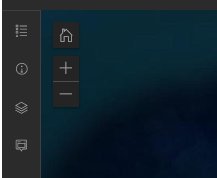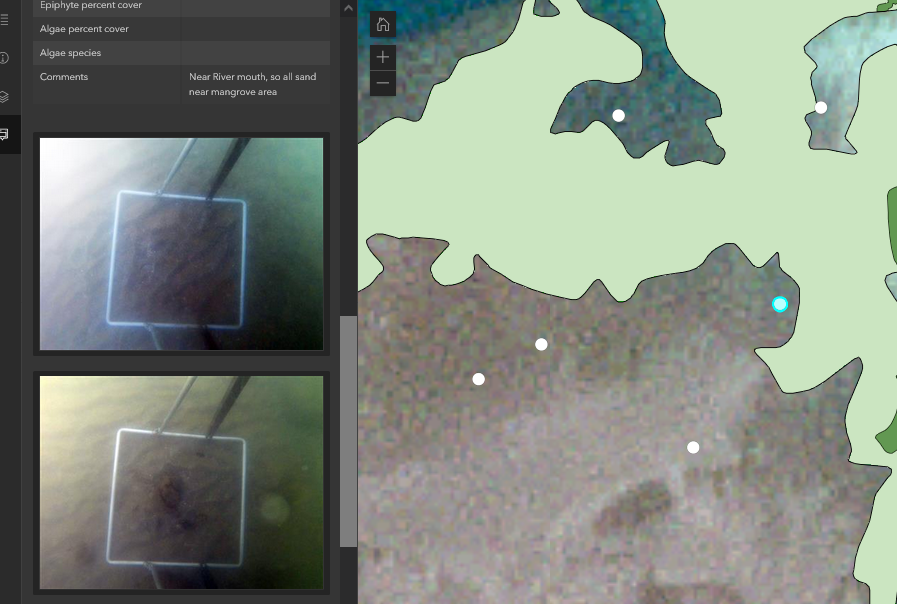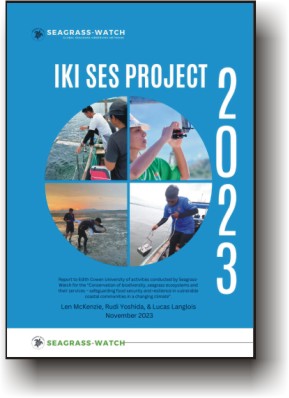Thailand
IKI Seagrass Ecosystem Services Project
Mapping Results
some cool facts
Some field facts
Some
field facts

How to use map viewer
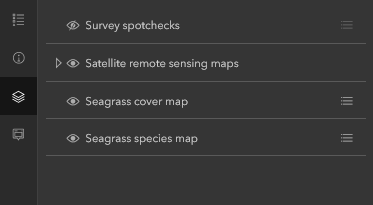 In Map Viewer, on the Contents (dark) toolbar (found on the left), select
In Map Viewer, on the Contents (dark) toolbar (found on the left), select ![]() (Layers) to display all the different map Layers.
(Layers) to display all the different map Layers.
The legend ![]() displays information about each layer that is visible at the current map scale. Not all layers contain legend information.
displays information about each layer that is visible at the current map scale. Not all layers contain legend information.
On the Contents (dark) toolbar, click (Legend). The legend displays information about each layer that is visible at the current map scale. Not all layers contain legend information.
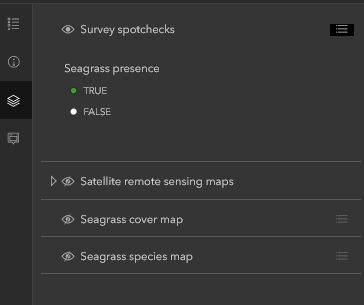 You do not need to show all map layers in the legend. For example, if the map focuses on seagrass distribution and extent for a region/country, you may want the legend to show only spotcheck symbols and not seagrass species and other reference data included in the map.
You do not need to show all map layers in the legend. For example, if the map focuses on seagrass distribution and extent for a region/country, you may want the legend to show only spotcheck symbols and not seagrass species and other reference data included in the map.
To hide a layer in the legend, do the following:
- Open the map with the legend in which you want to hide a layer.
- On the Contents (dark) toolbar, click Layers
 .
. - Browse to the layer you want to hide (turn off) or show (turn on).
- The layer visibility can then be turned on (Show layer
 ) or off (Hide layer
) or off (Hide layer  ) by clicking the eye symbol on the list.
) by clicking the eye symbol on the list.
Using the mouse wheel makes it easy to zoom and pan anytime you like without changing the tool you are currently using.
These shortcuts work in data view and layout view. In layout view, they apply to the page by default. You can hold down the SHIFT key and perform any shortcut to apply it to the data frame instead of the page (the active data frame in the case of rolling the mouse wheel, or the data frame you clicked in the case of clicking or dragging the mouse wheel).
| Mouse wheel action | ArcMap navigation function |
|---|---|
| Rolling wheel back and forth | Zooms in and out |
| Holding down CTRL and rolling | Zooms in and out but with finer increment; used for small adjustments |
| Clicking mouse wheel (or middle mouse button) | Centers map at location where you clicked |
| Holding down mouse wheel (or middle mouse button) and dragging | Pans |
| Holding down CTRL and clicking mouse wheel | Centers and zooms in at location you clicked |
| Holding down CTRL and dragging with the mouse wheel | Zooms in |
Koh Libong and Koh Muk (Trang) seagrass mapping results
Seagrass meadows surrounding Koh Libong, Koh Mook, and Mod Ta Noi (Trang, Thailand), were assessed between 13 August 2022 and 12 April 2023. Observers walked, snorkelled or used drop-cameras to collect photoquadrats at mapping points, which were positioned using a restricted random sampling design. Visual estimates of above-ground seagrass percent cover, seagrass species and macroalgae percent cover were recorded at each mapping point from 3 quadrats (50cm x50cm), using globally standardised Seagrass-Watch protocols. Substrate type was assessed at each mapping point by hand, and aided by a Van Veen grab at subtidal points. A differential handheld global positioning system (GPS) was used to locate each mapping point (accuracy ±3m). A total of 607 individual points were examined, of which 145 were collected from drop-camera, 448 from in situ sampling and 250 from Seagrass Spotter.
Seagrass was present at 401 of the mapping points, with percentage cover ranging from 0.2 to 48%, and with an average of 14.9%. Nine seagrass species were identified, with the most frequently encountered being Halophila ovalis, Enhalus acoroides and Cymodocea rotundata (36.3%, 32.6% and 19.0% average cover respectively). Spatially explicit seagrass maps were created from PlanetScope Dove (3.7 m × 3.7 m pixel) imagery, using the field validation point data and a machine-learning model (random forest). A total of 200.3 to 763 hectares of intertidal/shallow seagrass meadows, with an additional 225 hectares in subtidal (turbid) waters was mapped surrounding Koh Libong, Koh Mook and Mod Ta Noi.
Surronding Ko Libong, the seagrass presence map obtained from remote sensing showed seagrass covering between 200.3 to 763.0 ha with an additional 225 ha from subtidal/turbid areas that were manually digitized. The coastal intertidal meadows of the islands southeastern bay were mostly composed of Cymodocea rotundata, Enhalus acoroides and Thalassia hemprichii. Meadows in the western part of bay surrounding Leekpai pier (and dugong viewing tower) were predominantly composed of Enhalus acoroides close to shore and Halophila ovalis in the subtidal offshore areas. Similar species assemblages were found in the subtidal meadows between Koh Libong and Mod Ta Noi on the mainland, with also some Cymodocea rotundata. The seagrass of the northern coast of Koh Libong was scarcer with aggregated patches predominantly composed of Halophila ovalis and Halodule pinifolia.
The coastal seagrass meadows of Mod Ta Noi (mainland Trang) covered approximately 178 ha (from expert driven map digitization) and were composed of mostly Enhalus acoroides, Halophila ovalis and Cymodocea rotundata.
At Koh Mook, seagrass presence was estimated between 36.4 and 71.7 ha by remote sensing. However, the confidence in the output is moderate to low as only Seagrass Spotter data was available and points were concentrated in close proximity. Therefore, the training data used for the remote sensing model was mostly visual interpretation of the imagery without in-situ validation data.
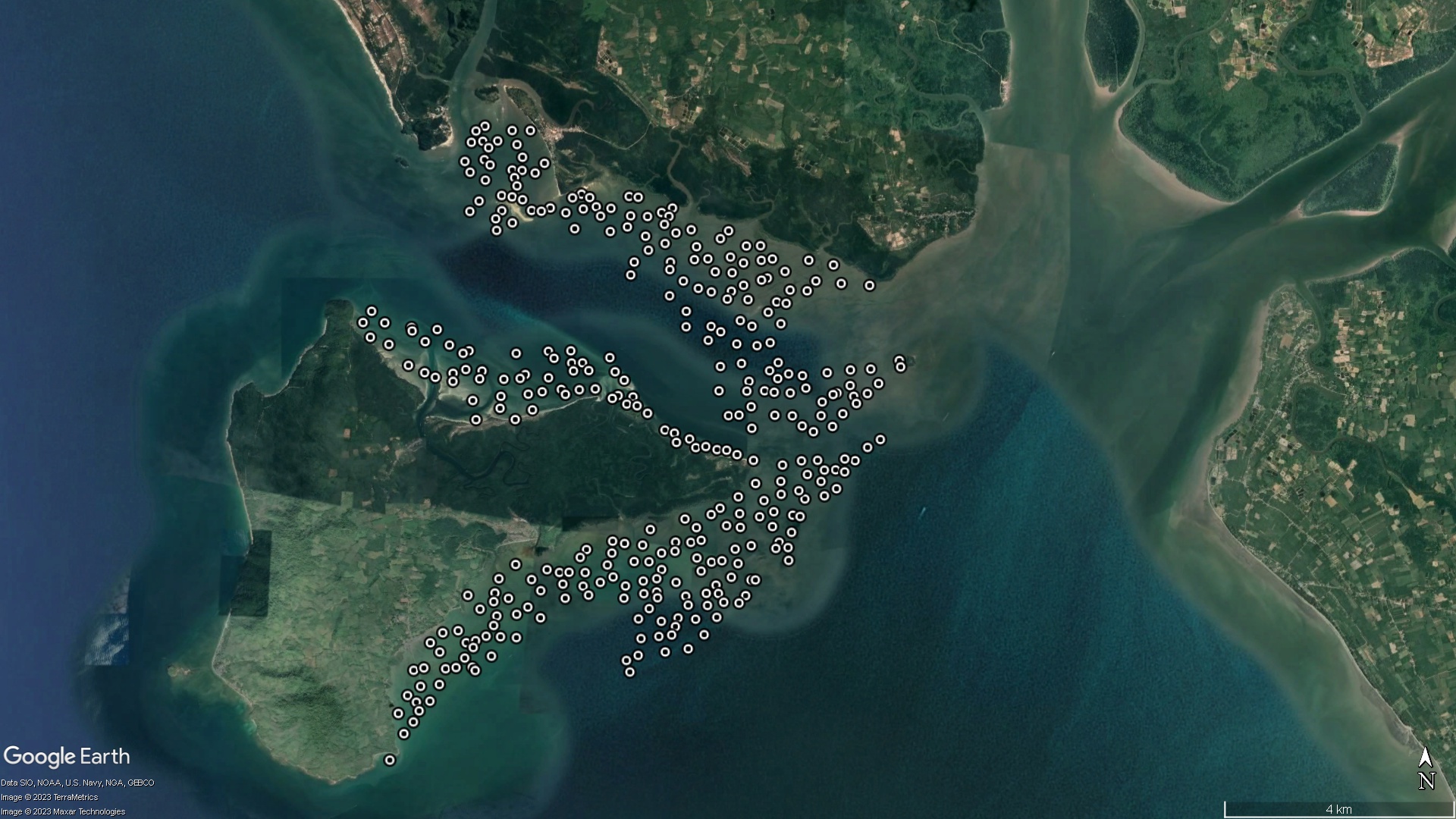
How the data was collected
Field validation points were spatially balanced and randomised within the Area of Interest (AOI). All data collected within the AOI was used to ensure mapping of all seagrass meadows present.
At each field validation point, teams conducted a spot-check using either Drop-Cam, in situ observation, or grab.
Photoquadrats were captured (except where only a grab sampler was used) during each spot-check. Photoquadrats were either geotagged or geolocated. Data collected from the photoquadrats (e.g. % cover and species) at each point and the Seagrass Spotter sightings were used to train and validate models for classification of satellite imagery.
Thailand seagrass
Partnership

Working with SAN (with initial in-field trails from Project Seagrass), Seagrass-Watch (in partnership with IKI) aimed to collate rich but dispersed seagrass distribution information into an easily searchable, viewable and fully customisable map-based view for seagrass meadows of Koh Libong (Trang)
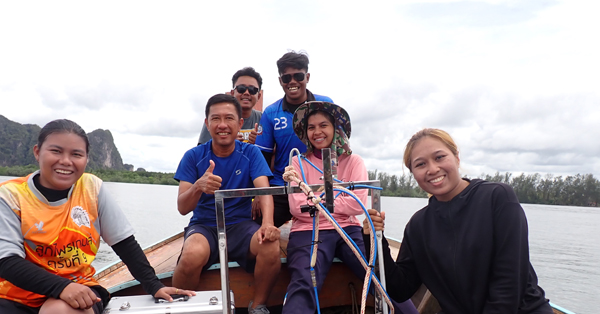
This project is part of the International Climate Initiative (IKI). The Federal Ministry for the Environment, Nature Conservation and Nuclear Safety (BMU) supports this initiative on the basis of a decision adopted by the German Bundestag.

